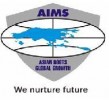
i
RV
University
Filter interviews by
RV University Interview Questions and Answers
7 Interview questions
I am open to relocating for the position, embracing new opportunities and experiences.
Willingness to adapt to new environments, such as moving to a different city or country.
Previous experience relocating for education or work, e.g., moving for a postdoctoral position.
Understanding of the local culture and community, which can enhance collaboration and integration.
Flexibility in adjusting to new institutional poli...
Topological sorting is a linear ordering of vertices in a directed acyclic graph where for every directed edge uv, vertex u comes before vertex v.
Topological sorting is used in scheduling tasks with dependencies, such as in project management.
It can be implemented using depth-first search algorithm.
Example: In a course prerequisite graph, topological sorting can help determine the order in which courses should be ...
Linear data structures store data in a sequential manner, while non-linear data structures allow for more complex relationships between data points.
Linear data structures include arrays, linked lists, queues, and stacks.
Non-linear data structures include trees, graphs, and heaps.
Linear data structures have a simple, one-dimensional layout, while non-linear data structures can have multiple dimensions and complex r...
AVL Trees are used in databases to efficiently store and retrieve data in a balanced manner.
AVL Trees help maintain balance in database indexes, ensuring efficient search and retrieval operations.
They are commonly used in database management systems like MySQL and Oracle.
AVL Trees are particularly useful for range queries and ordered traversal of data in databases.
They provide faster search times compared to unbal...
Operator overloading is the ability to define new meanings for operators in a programming language.
Allows operators to be used with user-defined data types
Can redefine the behavior of operators like +, -, *, /, etc.
Example: Overloading the + operator to concatenate strings
Branch and bound provides a feasible solution for puzzle problems compared to backtracking.
Branch and bound is more efficient in finding optimal solutions by pruning branches that cannot lead to a better solution.
Backtracking explores all possible solutions before finding the optimal one, which can be inefficient for large puzzle problems.
For example, in the traveling salesman problem, branch and bound can be used...
Greedy algorithm divides the domain, while Dynamic Programming divides the data.
Greedy algorithm focuses on making the best choice at each step without considering the overall solution, dividing the domain into subproblems.
Dynamic Programming breaks down a problem into smaller subproblems and solves each subproblem only once, dividing the data into overlapping subproblems.
Example: In the Knapsack problem, Greedy a...
RV University Interview Experiences
3 interviews found
I applied via Company Website and was interviewed in Apr 2024. There were 3 interview rounds.
Will test your skills in coding with C and java basically what you prefer to be good at
More questions were asked on Strings, Pointers, size of operator
Memory allocation
Program relates to Strings and data structures
(5 Questions)
- Q1. What is an application of AVL Tree in database
- Ans.
AVL Trees are used in databases to efficiently store and retrieve data in a balanced manner.
AVL Trees help maintain balance in database indexes, ensuring efficient search and retrieval operations.
They are commonly used in database management systems like MySQL and Oracle.
AVL Trees are particularly useful for range queries and ordered traversal of data in databases.
They provide faster search times compared to unbalanced...
- Q2. How topological sorting works
- Ans.
Topological sorting is a linear ordering of vertices in a directed acyclic graph where for every directed edge uv, vertex u comes before vertex v.
Topological sorting is used in scheduling tasks with dependencies, such as in project management.
It can be implemented using depth-first search algorithm.
Example: In a course prerequisite graph, topological sorting can help determine the order in which courses should be taken...
- Q3. What is operator overloading
- Ans.
Operator overloading is the ability to define new meanings for operators in a programming language.
Allows operators to be used with user-defined data types
Can redefine the behavior of operators like +, -, *, /, etc.
Example: Overloading the + operator to concatenate strings
- Q4. Difference in linear and non linear data structure
- Ans.
Linear data structures store data in a sequential manner, while non-linear data structures allow for more complex relationships between data points.
Linear data structures include arrays, linked lists, queues, and stacks.
Non-linear data structures include trees, graphs, and heaps.
Linear data structures have a simple, one-dimensional layout, while non-linear data structures can have multiple dimensions and complex relati...
- Q5. Which provides feasible solution for puzzle problem backtracking or branch and bound
- Ans.
Branch and bound provides a feasible solution for puzzle problems compared to backtracking.
Branch and bound is more efficient in finding optimal solutions by pruning branches that cannot lead to a better solution.
Backtracking explores all possible solutions before finding the optimal one, which can be inefficient for large puzzle problems.
For example, in the traveling salesman problem, branch and bound can be used to f...
(1 Question)
- Q1. Generic once about myself my profile and salary expectations
Interview Preparation Tips
Any coding knowledge
Data structures and algorithm
Dbms
CN and OS
Skills evaluated in this interview
I applied via LinkedIn and was interviewed before Mar 2023. There were 3 interview rounds.
(2 Questions)
- Q1. Greedy and DP which divides Data and which divides the domain?
- Ans.
Greedy algorithm divides the domain, while Dynamic Programming divides the data.
Greedy algorithm focuses on making the best choice at each step without considering the overall solution, dividing the domain into subproblems.
Dynamic Programming breaks down a problem into smaller subproblems and solves each subproblem only once, dividing the data into overlapping subproblems.
Example: In the Knapsack problem, Greedy algori...
- Q2. If the size of an input image is 1000 x 1000 and filter of 3x3 applied with stride 1, what will be the dimensions of output image?
- Ans.
The dimensions of the output image will be 998 x 998.
Output image dimensions = (input image dimensions - filter dimensions + 1) / stride
In this case, (1000 - 3 + 1) / 1 = 998
Therefore, the output image will be 998 x 998
(2 Questions)
- Q1. P, NP, NPC & NPH problems
- Q2. Competitive Coding scenario based Coding questions
(1 Question)
- Q1. Usual basic HR questions
Interview Preparation Tips
- DSA
- Programming
- Research
- Machine Learning
- Deep Learning
- Computer Networking
- Operating Systems
Skills evaluated in this interview
I appeared for an interview before Mar 2024, where I was asked the following questions.
- Q1. Why work with RV
- Ans.
Working with RV enhances research collaboration, innovation, and practical applications in various fields.
Collaboration: RV fosters partnerships with industry leaders, enhancing research impact.
Innovation: Engaging with RV promotes cutting-edge research and technology development.
Practical Applications: RV projects often translate research findings into real-world solutions, benefiting society.
Interdisciplinary Approac...
- Q2. Able to shift location
- Ans.
I am open to relocating for the position, embracing new opportunities and experiences.
Willingness to adapt to new environments, such as moving to a different city or country.
Previous experience relocating for education or work, e.g., moving for a postdoctoral position.
Understanding of the local culture and community, which can enhance collaboration and integration.
Flexibility in adjusting to new institutional policies ...
- Q3. Long term commitment
Top trending discussions






Interview questions from similar companies

Assistant Professor Interview Questions & Answers
K R Mangalam Universityposted on 16 Jul 2022
I applied via Newspaper Ad and was interviewed before Jul 2021. There were 5 interview rounds.
(1 Question)
- Q1. Basic introduction about yourself and availability to join position etc etc.
(1 Question)
- Q1. About academic teaching and research work related general knowledge
(1 Question)
- Q1. Basic level interaction with the management for future prospects.
(1 Question)
- Q1. Salary negotiation over previous salary
(1 Question)
- Q1. Immediate joining related information
Interview Preparation Tips

Assistant Professor Interview Questions & Answers
Asia-Pacific Institute of Managementposted on 30 Oct 2023
I applied via Company Website and was interviewed in Apr 2023. There were 2 interview rounds.

(2 Questions)
- Q1. Subject Related and salary related
- Q2. Salary Expectation
Interview Preparation Tips

Assistant Professor Interview Questions & Answers
K R Mangalam Universityposted on 15 Oct 2024
(2 Questions)
- Q1. About profile- introduction
- Q2. Salary expectation

Assistant Professor Interview Questions & Answers
K R Mangalam Universityposted on 16 Jul 2022

Group discussion should be related to subject of the interviewer.
(1 Question)
- Q1. Job skills required for growth of institute can be asked
Interview Preparation Tips

Assistant Professor Interview Questions & Answers
K R Mangalam Universityposted on 19 Feb 2023
I applied via Indeed and was interviewed in Jan 2023. There were 5 interview rounds.

(2 Questions)
- Q1. Introduction and background
- Q2. Technical questions related
(1 Question)
- Q1. With director formal background
(1 Question)
- Q1. With chairman fornal introduction
(1 Question)
- Q1. Salary and joing related discussion
Interview Preparation Tips

Assistant Professor Interview Questions & Answers
K R Mangalam Universityposted on 12 Aug 2023
I applied via LinkedIn and was interviewed before Aug 2022. There were 3 interview rounds.

(1 Question)
- Q1. Questions related to your expertise, general and research based question
(1 Question)
- Q1. Salary negotiation is basically done here

Assistant Professor Interview Questions & Answers
Asia-Pacific Institute of Managementposted on 19 Feb 2025
Last company details
Interview Preparation Tips
RV University Interview FAQs
Some of the top questions asked at the RV University interview -
Tell us how to improve this page.
Interview Questions for Popular Designations
Overall Interview Experience Rating
based on 3 interview experiences
Difficulty level
Duration
Interview Questions from Similar Companies
RV University Reviews and Ratings
based on 11 reviews
Rating in categories
|
Assistant Professor
11
salaries
| ₹6 L/yr - ₹13.2 L/yr |
|
Executive
5
salaries
| ₹3 L/yr - ₹4.5 L/yr |
|
Executive Assistant
5
salaries
| ₹3.5 L/yr - ₹4.2 L/yr |
|
HR Manager
4
salaries
| ₹10 L/yr - ₹12 L/yr |
|
Teaching Assistant
4
salaries
| ₹1.2 L/yr - ₹4.2 L/yr |

Asia-Pacific Institute of Management

Jetking Infotrain

National Institute of Technology

Billabong High International School
- Home >
- Interviews >
- RV University Interview Questions













